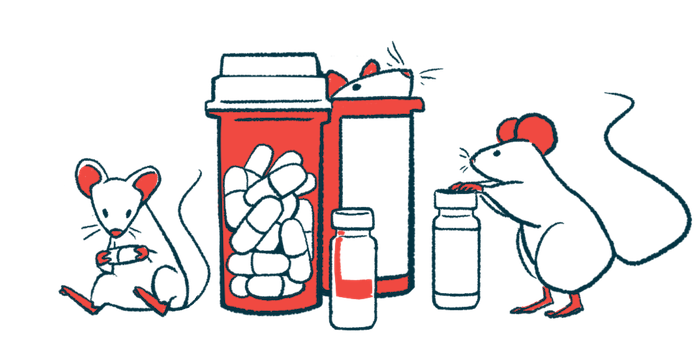Piceatannol, Natural Compound, Seen to Ease PF Markers in Mice
Collagen deposition and associated gene activity lower with treatment

Piceatannol, a natural compound with antioxidant and anti-inflammatory properties, eased the signs and symptoms of pulmonary fibrosis (PF) in mice, a study reported.
According to its researchers, these findings indicate that piceatannol could be a promising treatment candidate for PF.
The study, “Piceatannol-mediated JAK2/STAT3 signaling pathway inhibition contributes to the alleviation of oxidative injury and collagen synthesis during pulmonary fibrosis,” was published in the journal International Immunopharmacology.
Oxidative stress plays a major role in PF, a disease marked by chronic inflammation and scarring (fibrosis) of the lungs. PF symptoms include shortness of breath and a dry, hacking cough.
Oxidative stress is caused by an imbalance between the production and accumulation of toxic free radicals called reactive oxygen species (ROS) and the cells’ ability to eliminate them. Lungs are particularly susceptible to oxidative stress because of their direct exposure to oxygen.
Piceatannol is derived from certain grapes, peanuts and other dietary sources
Piceatannol is a natural compound mainly derived from grapes, white tea, berries, peanuts, and sugar cane that is thought to have antioxidant and anti-inflammatory properties.
Investigators at the Renmin Hospital of Wuhan University, in China, tested piceatannol in mouse and cell-based models of PF.
“The present study evaluated the effect of piceatannol on the pathogenesis [development] of PF and investigated the potential mechanisms,” the team wrote.
To establish the animal model, researchers exposed mice lungs to bleomycin, a cancer medication often used to trigger fibrosis in animals. One week later, piceatannol was administered by abdominal injection at either 20 or 60 mg/kg for 14 consecutive days. Lung function tests and tissue analysis were then conducted to look for signs of PF.
As expected, PF mice showed poorer lung function, as indicated by reduced breathing capacity and decreased lung volume and expansion. Both doses of piceatannol improved lung function across these parameters, as well as other markers of lung function, including normalization of blood oxygen and carbon dioxide levels.
Lung tissue staining experiments revealed enhanced deposits of collagen, the primary protein component of scar tissue, in PF mice. Piceatannol reduced collagen deposition and the activity of genes associated with collagen and scar tissue formation. Treatment also lowered the levels of hydroxyproline, a major component of fibrous collagen.
Analysis of mice tissue detected elevated levels of 4-HNE, a protein biomarker for oxidative stress, and significantly lower amounts of SOD1 and GPX4. These two proteins detoxify ROS species and lessen oxidative stress. Piceatannol treatment significantly lessened oxidative stress, as shown by decreased 4-HNE and increased SOD1 and GPX4.
Similar results were seen with other oxidative stress markers, including malondialdehyde and thioredoxin-interacting protein, and the antioxidant markers thioredoxin and thioredoxin reductase.
“Taken together, piceatannol could alleviate oxidative damage in lung tissues during PF,” the researchers wrote.
Researchers then explored the impact of treatment on the JAK2/STAT3 pathway, whose abnormal activation mediates both oxidative stress and collagen production in PF.
Consistently, protein levels of p-JAK2 and p-STAT3 were increased in lung tissues from PF mice. Both piceatannol doses significantly lowered p-JAK2 and p-STAT3 levels, “indicating that piceatannol may exert protective roles during PF by inactivating JAK2/STAT3 pathway,” they wrote.
A series of experiments followed in mouse lung fibroblasts, a cell type that directly contributes to scar tissue formation. In these experiments, cells were exposed to TGF-beta, a potent protein activator of fibroblasts and collagen production, with or without piceatannol.
Results showed that piceatannol could suppress the activation of fibroblasts driven by TGF-beta in a dose-dependent manner. Piceatannol’s use also reduced collagen production and oxidative stress and blocked the activation of the JAK2/STAT3 pathway.
Lastly, researchers demonstrated that stimulating cells with a JAK2 activator reversed the positive effects of piceatannol across all tests.
“Our data strongly showed that piceatannol attenuated [bleomycin]-induced PF and improved pulmonary function,” the researchers wrote. “Piceatannol attenuated oxidative injury and collagen synthesis via inhibiting JAK2/STAT3 pathway [and ] … is promised to be a novel candidate in the treatment of PF in the future.”







